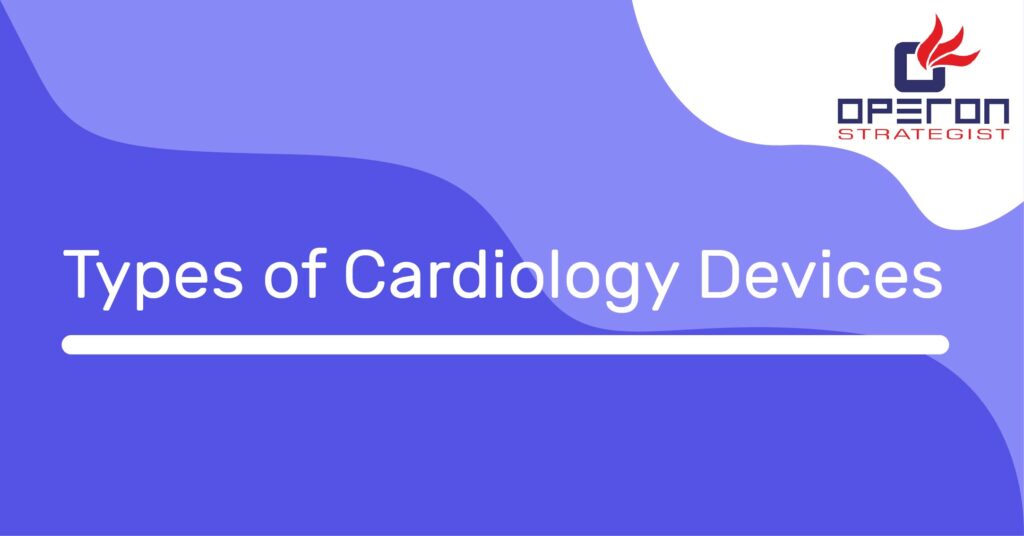Introduction of Cardiology Devices:
Cardiology devices are one of the largest medical device categories in terms of sales. They rank second only to in-vitro diagnostic devices. Cardiology devices account for approximately one in every ten medical devices manufactured. They range in size from small, implantable devices to big exterior equipment and are used to diagnose and treat heart disease and other cardiovascular disorders.
Cardiology devices serve a range of roles. Some monitor the heart for arrhythmias and may intervene to rectify abnormal beats. Others support the heart’s pumping function. Individual valves can be made, as well as artificial organs capable of totally replacing the heart.
Stents can be used to enhance blood flow, while other devices can remodel the chambers of the heart.
Looking For a Medical Device Regulatory Consultant?
Let’s have a word about your next project
Some cardiology devices operate outside of the body, taking over cardiopulmonary functions during surgery or giving emergency defibrillation. All medical devices must be constructed to precise specifications. Because of their critical duties, cardiology devices are subject to stringent restrictions. In addition, if the device is implanted, it must meet the most exacting requirements. Application of the appropriate ISO standard can be difficult for the producer. As an ISO 13485 medical device consultant, we assist medical device manufacturers in implementing the QMS and relevant ISO standards.
Types of Cardiology Devices:
Implantable Cardioverter Defibrillators:
People with advanced heart disease, heart failure, and some inherited arrhythmias are more likely to experience life-threatening ventricular arrhythmias, which are fast, irregular heartbeats. These individuals may require an ICD, which uses an electric shock to reestablish a normal heart rhythm. An ICD is frequently advised for persons with ventricular arrhythmias who have not responded to previous treatments, such as catheter ablation or medication therapy.Pacemakers:
There are two types of pacemakers. The classic model is implanted beneath the skin and connected to the heart via electronic leads. A smaller, leadless pacemaker is implanted inside the heart and does not require intravenous leads. Pacemakers are used to treat bradycardia, which causes the heart to beat too slowly (less than 60 beats per minute). The pacemaker generates electrical pulses that keep the heart beating at its usual rate.Biventricular Devices:
A biventricular pacemaker functions similarly to a typical pacemaker, except it sends electrical impulses to the heart via a third wire to resynchronize the contractions of the heart’s left lower chambers, or ventricles. A biventricular pacemaker, also known as a cardiac resynchronization device, is implanted when drugs fail to relieve the symptoms of heart failure, a condition in which the heart does not pump enough blood to the body and the left chamber does not beat in a coordinated manner.As a result, the two ventricles contract at different times. A resynchronization device regulates the contractions of the left ventricle. Biventricular defibrillators are available for those who would benefit from resynchronization but also require defibrillator protection. This combo device works to keep a regular heartbeat while also speeding up or slowing down a heart that is pumping too slowly or too quickly. It also captures information about your heart rhythm, allowing our physicians to assess your heart health and alter treatment as necessary.Implantable Cardiac Loop Recorders:
Your cardiac electrophysiologist may consider implanting a loop recorder, which is a wireless cardiac monitor. This device will continuously record information about your heart rhythm for up to three years. Smaller than an AA battery, the implantable cardiac loop recorder is put beneath the upper chest skin to record information about the heart’s electrical activity, similar to an electrocardiogram, or EKG. It is used to diagnose or determine the cause of an arrhythmia.
People who have experienced unexplained fainting spells or heart palpitations that cannot be identified by short-term cardiac rhythm recording devices (such as Holter monitors) may be eligible for this device. People with atrial fibrillation, a rapid and irregular heartbeat, may also benefit from an implantable cardiac loop recorder, according to their doctors. This device is also utilized in persons who have suffered a stroke for which no reason has been identified.
Standards and Regulations for Cardiology Devices:
Because of the importance of Cardiology Devices and their often extended contact with patients, the standards and regulations governing such equipment are considerable. In addition to ISO 13485:2016, which covers all medical devices, particular standards for cardiac medical devices include:
- ISO 14708-1:2014 – Active implantable cardiac devices: general requirements for safety, marking, and information to be provided by the manufacturer.
- ISO 14708-2:2012 – Cardiac pacemakers.
- ISO 14708-5:2010 – Circulatory support devices.
- ISO 14708-6:2010 – Particular requirements for active implantable medical devices intended to treat tachyarrhythmia.
- ISO 27185:2012 – Cardiac rhythm management devices, symbols to be used with cardiac rhythm management device labels, information to be supplied, and 5555 general requirements.
- IEC 62304:2006 – Medical device software.
Need Cardiology Device Consultation?
Proper standard implementation is critical for manufacturers, and as medical device consultants, we can provide valuable help. The cardiology device industry feeds on greater awareness of cardiovascular hazards, driven by online visibility, hospital programs, and public outreach from agencies such as the CDC, stressing early detection and treatment choices. For consultation, get in touch with us.
- adminhttps://operonstrategist.com/author/admin-2/
- adminhttps://operonstrategist.com/author/admin-2/
- adminhttps://operonstrategist.com/author/admin-2/
- adminhttps://operonstrategist.com/author/admin-2/




